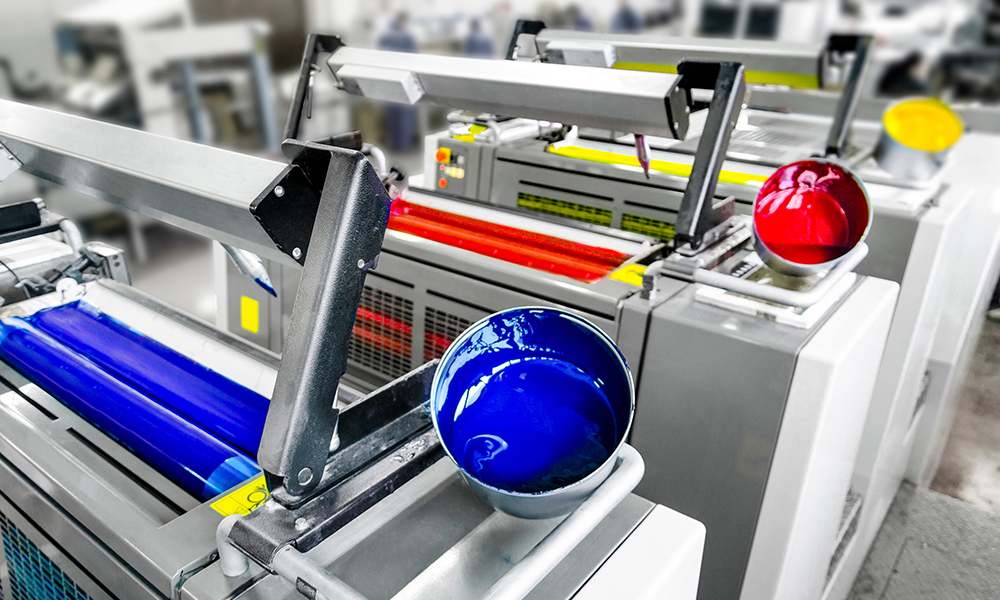litho printing Explained: A Walkthrough for Starters
litho printing Explained: A Walkthrough for Starters
Blog Article
A Comprehensive Guide to Comprehending Litho Printing Techniques
The world of litho printing, a strategy stemming from the late 18th century, is a remarkable blend of history, innovation, scientific research and art. This extensive guide will unravel the complexities of this printing technique, from the composition of litho inks to the obstacles encountered in modern-day applications. As we venture into the ins and outs of lithography, the significance of automation and sustainability in ensuring its future importance ends up being significantly clear. Remain with us as we trip right into the captivating realm of litho printing.
The Historic Development of Litho Printing
The historic trajectory of litho printing, a critical development in the realm of communication, is an exciting story of human ingenuity. Birthed in the late 18th century by Alois Senefelder, this technique was originally a cost-effective approach of releasing staged jobs. Lithography, derived from the Greek words for 'rock' and 'to write', made use of a smooth stone surface area to transfer pictures onto paper. The process evolved with the arrival of the rotary press, which considerably enhanced efficiency (litho printing). In the 20th century, the technology of countered lithography revolutionized the market, permitting mass manufacturing of premium prints. Each phase of litho printing's development showcases humanity's unrelenting quest of effectiveness and top quality in visual communication.
Decoding the Science Behind Litho Printing Inks
Moving onward in the expedition of litho printing methods, the focus now shifts to the science behind litho printing inks. The composition of these inks, their drying out procedure, and color mixing techniques develop the foundation of this intricate art form. Understanding these elements is important to mastering the craft and achieving the wanted print outcomes.
Composition of Litho Inks
In lithographic printing, the fundamental function of litho inks can not be overemphasized. The make-up of litho inks varies relying on its objective, but generally, they include 2 primary components - pigments and lorries. Pigments, the color-providing elements, are carefully ground bits put on hold in the automobile, a fluid that carries the pigment onto the printing surface. The vehicle is a complex mixture of materials, oils, and solvents, which influence the ink's drying out time, adhesion, and gloss. Furthermore, various additives exist to enhance particular buildings like flow, drying, and resistance to ecological impacts. Each element plays a vital component in the final print's top quality, making the precise solution of litho inks a complex science.
Ink Drying Process
From the make-up of litho inks, focus transforms to the remarkable process of ink drying. Two key approaches are utilized in litho printing: oxidative drying out and absorption. Absorption, on the various other hand, entails the ink leaking into the paper fibers, which is a faster process yet can lead to much less lively shades.
Color Mixing Techniques
While the drying procedure plays a vital duty in litho printing, the science of color blending techniques holds equal importance. The scientific research behind litho printing inks also takes into account the transparency of the ink, which influences exactly how colors overlay and mix.
The Art and Design Components in Litho Printing
Litho printing breathes life right into art and layout via its one-of-a-kind aspects. The procedure includes developing a photo on a lithographic sedimentary rock plate or steel plate with a smooth surface area. The photo is after that published onto a medium, typically paper, by moving the ink from the plate. What sets litho publishing apart is its capacity to duplicate elaborate layouts with high fidelity, making the outcome nearly the same to the initial art work. This is accomplished with making use of different line methods such as stippling, cross-hatching, and hatching, which allow for a variety of tonal effects. Litho printing suits a variety of colors, allowing musicians to produce lively and dynamic prints. This mix of accuracy and adaptability makes litho printing a preferred selection for lots of musicians and developers.
Modern Applications of Litho Printing Methods
Litho printing methods have located extensive usage in the contemporary commercial industry. Its impact and relevance remain to grow with the advent of new advancements and modern technologies in the field. This area will certainly discover these contemporary applications and the transformative function they play in the printing market.
Industrial Litho Printing Uses
Litho printing remains an important component of the industrial field. High-volume printing jobs, such as the manufacturing of books, newspapers, and product packaging, depend on litho printing for its ability to supply exceptional photo quality and cost performance. Litho printing likewise offers a broad shade range, superior to that of electronic printing.
Innovations in Litho Printing
Pressing the borders of traditional strategies, contemporary improvements have actually sustained a host of advancements in litho printing. One noticeable advancement is digital litho printing, which integrates the virtues of electronic innovation with litho's top quality outcome. These innovations underscore the long-lasting relevance of litho printing in the contemporary world.
Checking out the Process of Litho Printing: Detailed

Challenges and Solutions in Contemporary Litho Printing

Despite the accuracy and tradition that litho printing proudly supports, it is not without its set of contemporary difficulties. Digital litho printing allows for cost-effective short runs and very easy customization, dealing with the issue of variable information. Hence, while there are challenges, the litho printing sector is proactively adapting to satisfy them head-on, ensuring its relevance in the future.
Verdict
In final thought, litho printing, with its rich history and scientific details, holds a considerable place in the print sector. The go to my site future of litho printing hinges on its capability to adjust to these altering needs, affirming its long-lasting worth in a developing market.

Report this page